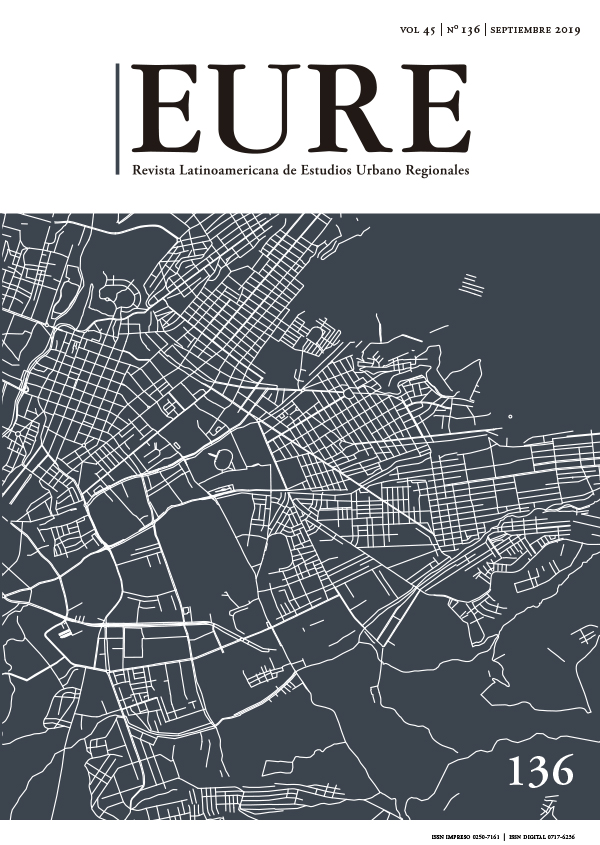The Right to Housing or to Private Property? From Public Policies to Urban Informality in the Metropolitan Area of Lima (1996Í€“2015)
DOI:
https://doi.org/10.4067/S0250-71612019000300005Keywords:
urban periphery, human settlements, urban policyAbstract
As a consequence of the massive titling policy implemented by the Peruvian government from 1996, thousands of citizens have become individual landowners; but this legal ownership has not improved the minimum habitability in urban settlements. We present a case study on the neighborhoods resulting from this mode of land production in the Metropolitan Area of Lima, proving that social organization is the one actually in charge of achieving urban consolidation, replacing the role of the State. It is concluded that this policy has induced in social organizations, the valuation of the private good over the collective struggle for the construction of the urban habitat, which is not only blocked, but also stopped. This situation is constantly reinforced by state institutions and the effects of economic restructuring.Downloads
Published
How to Cite
Issue
Section
License
Copyright (c) 2019 Revista EURE - Revista de Estudios Urbano Regionales

This work is licensed under a Creative Commons Attribution 4.0 International License.
Al momento de aceptar la publicación de sus artículos, los autores deberán formalizar la cesión de derechos de autor a EURE, según las condiciones establecidas por la Revista.
Ésta establece que el autor autoriza a EURE de manera gratuita, exclusiva e ilimitada a reproducir, editar, publicar, distribuir, publicitar, comercializar y traducir el artículo, a cualquier soporte conocido o por conocer y desarrollar.
Del mismo modo, los autores aseguran que el artículo propuesto es original, no publicado y no propuesto para tal fin a otro medio de difusión.


